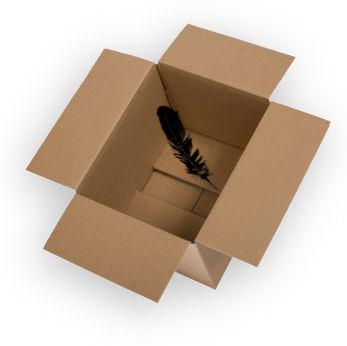Shipping bricks or feathers? What is “Dimensional Weight”?
 Remember the old question, “What weighs more? One hundred pounds of feathers or 100 pounds of bricks?” Here’s a related, modern-day question: What costs more to ship? One hundred pounds of feathers or 100 pounds of bricks? There is a clear answer to that question, and it may surprise you.
Remember the old question, “What weighs more? One hundred pounds of feathers or 100 pounds of bricks?” Here’s a related, modern-day question: What costs more to ship? One hundred pounds of feathers or 100 pounds of bricks? There is a clear answer to that question, and it may surprise you.
To answer that question we must first understand “dimensional weight.” The dimensional weight of a package is determined using the packages length, width and height to determine the billable weight for that package. UPS and FedEx have used this technique for a long time, but it was mainly reserved for larger packages. In our industry we saw it on shipments of water bottles. Water bottles are lightweight but bulky to ship. You can’t make a bottle any smaller than it already is. Therefore, you are shipping a box with a lot of dead air. UPS would call these “oversized” boxes. Once a package became oversized they would use dimensional weight to determine the weight to use for billing. One of our most popular bottles the A601 has always run into this problem. The actual weight for one box of 100 bottles is 17 lbs. Because of the box dimensions (24” x 18” x 17”) UPS and FedEx bill this package as if it were a 45 pound package. Needless to say, shipping a 45 pound package is a lot more expensive than a 17 pound package. The reason UPS and FedEx did it that way is because the bigger boxes take up more room on their trucks. This means they can put fewer boxes per airplane, semi-trailer, and delivery trucks. To help account for that they would charge more for these oversized boxes by using dimensional weight.
Starting at the beginning of 2015, UPS and FedEx switched all of their pricing to be based on dimensional weight. All weights for packages from that point on would be determined by their dimensions first. What happened to cause this drastic change? It was said that it was meant to help reduce package size, and that would lead to lower fuel usage and other transportation costs. That is true, but that was the effect, not the cause. I feel that Amazon and the Christmas of 2013 are to blame. That Christmas Amazon had surge in holiday orders. That surged trickled down to UPS. UPS and Amazon were not prepared, and a lot of packages were delivered late. Everyone was looking for someone to blame. Amazon wanted to blame UPS and UPS wanted to blame Amazon. Taking a look at the way Amazon was packaging items back then we can start to see why there might have been a problem for UPS to handle more packages from Amazon. I am sure once you see the pictures below they will look familiar to you–shipping boxes that were way bigger than they needed to be for what was inside:
This goes back to bigger packages equals less packages on planes, semi-trailers, and deliver trucks. Had Amazon packed their shipments in smaller boxes would UPS had been able to deliver more packages on time? UPS thinks they could have. That is one of the big reasons they switched to dimensional weight. They are trying to force everyone, including Amazon, to think about the size of box they use.
This has never really been a problem in the promotional products industry. Most of the boxes that are used to ship our custom printed products such as pens, mugs, and stress relievers have been custom ordered to fit exact quantities. It has always been more efficient this way. We also want to limit the movement of the custom printed items inside the boxes during transit. The more an item moves inside a box during shipping the more likely it is to be damaged when it arrives. All of that being said the promotional products industry is still affected by these changes to using dimensional weight. A shipment of stress relievers is now going to be more expensive because it has to ship in a bigger box. The product itself is light, but it has to ship in a bigger box. This holds true for a lot of items–bags, coolers, plastic cups, and hats, for example. Everyone is now paying more for shipping for items that are lightweight, but a little bulky.
So what costs more to ship? One hundred pound of feathers or 100 pounds of bricks? The answer is 100 pounds of feathers because they are going to need to go in a bigger box. Dimensional weight is going to mean UPS and FedEx are going to charge more for the feathers.
‹ All Blog Posts




